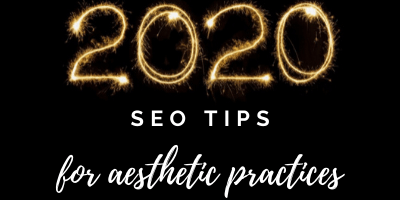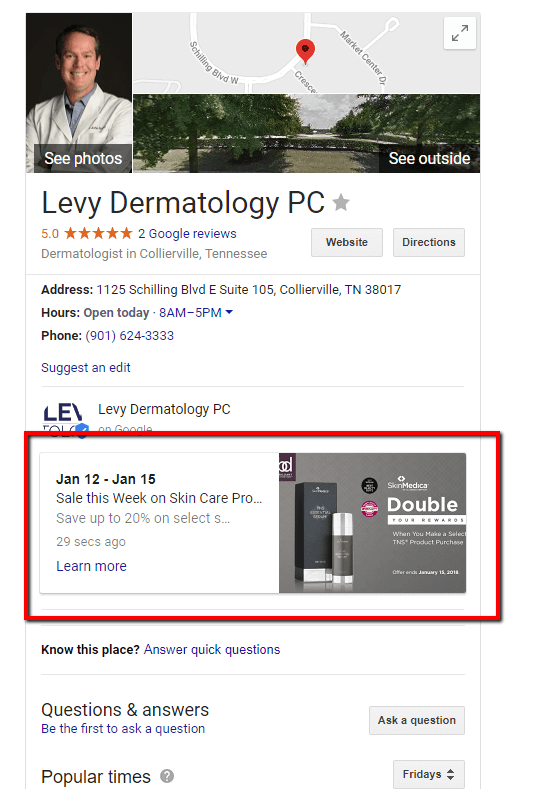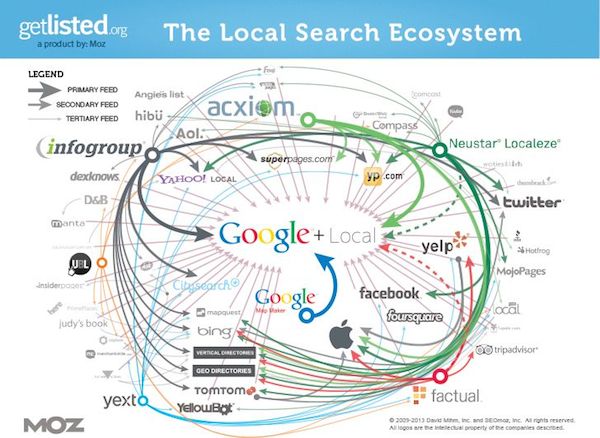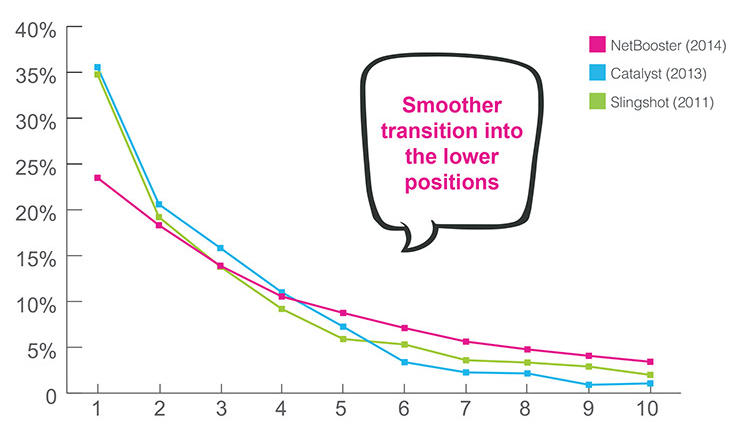
*Important Note: This blog was originally published in 2018 and has been updated to reflect the SEO best practices for 2020. All updates are noted below each item mentioned.
I’ll save my digital marketing predictions for another article and instead just focus on the top SEO tactics your medical or aesthetic practice should focus on in 2018. Everything I’m mentioning here is predicated on your practice making content marketing a priority.
Here are some of the top SEO tactics to implement in 2020:
1) Improve On-Site Engagement: Be aware of your top Behavior stats in Google Analytics, including bounce rate and average time on site. These influence your most important metric, your website conversion rate. You may not even need to look at your stats to know your website needs a facelift.
Now, more than ever, Google evaluates a website’s “credibility” based on on-page engagement. Therefore, the user experience on your website indirectly influences your SEO. A fast-loading website, with great media, quality articles, and amazing before & afters will cumulatively aid in improving your website’s organic rankings.
*2020 update: be wary of misleading Google Analytics metrics. Your conversion rate is your key metric to track so ensure you are able to track both website form submissions and phone calls.
2) “Enhance” Your Blogs: Stop writing boring, short blog articles. Even if you’ve produced thorough, well-written content you may be short-changing yourself because of a poor presentation. Enhance your blogs, and content in general, by posting written copy accompanied by supporting videos, before & after photos, and infographics. All additional content gets indexed and these videos and images make your posts and pages more readable!

*2020 update: the general message about content hasn’t changed much from 2018 to 2020. I would highly recommend you track your blog articles’ search engine positions and if some older posts are ranking well but they lack good presentation and are missing calls to action, edit and re-post them (which, ironically, is exactly what I’m doing here).
3) Lengthen Meta Descriptions: I touched on this recent development in a previous blog post. You should now be writing meta descriptions that are well above the threshold that your SEO plugin is advising (likely 160-170 characters). Aim for a thorough description of 230-320 characters. This will enhance your organic listings and improve click-through rates.
*2020 update: Google has since stepped back down to a 160 character limit for meta descriptions. It’s ok to go beyond this, just make sure the most import summary you want to be displayed in search engines is in the first 160 characters. Keep in mind that the meta description is NOT a direct ranking factor. However, it can indirectly play a role in your rankings because a well-written meta description can drive more clicks, and assuming the traffic engages and converts, that can boost your SEO.
4) New Google My Business Features: I touched on some of the new features Google My Business (GMB) rolled out in 2017 in this article. Take advantage of Posts, which gives your listing a nice call to action to drive more clicks. If you’re wondering how you can uniquely track traffic from your GMB listing compared to general organic traffic then you’ll be happy to know that we have a solution for you here.

*2020 update: Posts are still around, as are Offers. Try working in some hash tags in your your Posts to see if they help at all with your map rankings.
5) The Rise of Featured Snippets: If you’re unfamiliar with what Featured Snippets are then I recommend you check out this article. You’ve probably noticed these “blocks” of text showing up at the top of some of your searches. These Featured Snippets present a great opportunity for practices to gain additional visibility by producing content that closely matches “long tail” (very specific, in-depth) searches your prospective patients are performing. The one drawback to Featured Snippets is that often times the searcher may find their answer without even having to click, which means less traffic to your website. Still, I’d rather be positioned at the top of search results even if it means less traffic.
*2020 update: There’s been a lot of changes going on with featured snippets in early 2020. In January 2020, Google announced that it planned to deduplicate urls that appeared in featured snippets. In other words, if your website showed up in the featured snippets (position 0), with a link, you would not see it rank again on page one. Keep in mind that when I say right-side I’m referring to your search results on desktop. On mobile, the featured snippet may not appear at all, impacting your rankings if you’re #1 for featured snippets and do not have any other page 1 rankings.
Fast forward to March 2020 and Google announced that it would move the featured snippet back to the main search results but that you would not see any other page 1 organic rankings.
6) Review Schema Markup: This isn’t a new feature, as I predicted a year ago that this would continue to grow, but one that still has a lot of value when it comes to enhancing your search presence. Your first priority should be on growing your patient reviews though. There are many quality softwares out there that can help you with this, but we’re obviously partial to Magic Rating. You can check out the one year report of how all clients are doing using Magic Rating here. Focus on Google My Business, Real Self, and Yelp reviews, in that order.

Got the review strategy in place? Great, now work in the schema markup that’ll show your star ratings next to your organic search results. That’ll dramatically enhance your listing and improve your organic click-through rates, which means more traffic and more leads for your practice!
*2020 update: review schema markup is still going strong. There’s a lot more schema markup or structured data that you can add to your website, including local business, geo-coordinates, breadcrumbs, and more.
Keep in mind that these aren’t the only keys to digital marketing success in 2018, we’re just focusing on SEO. Prioritize content marketing this year – including building your blogs, videos, and before & after cases – and follow the tactics above and you’ll set yourself up for organic success.
*2020 update: two years have passed, but you should have same content-generation focus to improve your SEO. As mentioned in #2 above, consider re-purposing old content, especially if it already ranks well. Look at your Google Analytics landing page data and filter down to old blogs that are still generating a lot of traffic. Update these and monitor your conversion rates.
If you’d like to learn more about SEO then I recommend you check out our collection of SEO articles here. If you have a specific question or would like to learn more about how TRBO can help your medical or aesthetic practice in 2018 then drop us a line here or give us a ring at 877-673-7096 x2.






